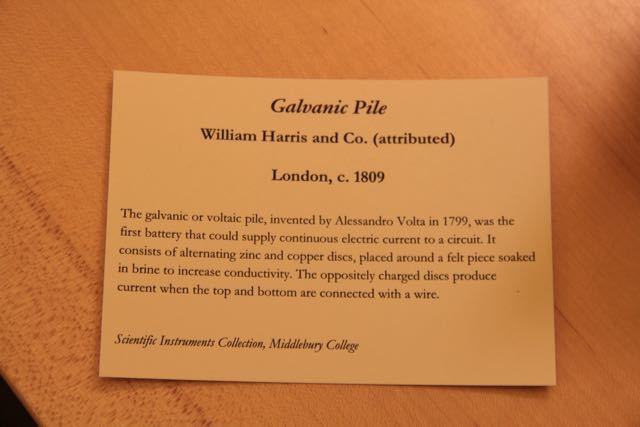Introduction to the Voltaic/Galvanic Pile
This is a voltaic pile, a device used by scientists in the 19th century to study electricity in a controlled and reliable manner. Invented in 1799 by Alexander Volta, the voltaic pile consists of a series of alternating metal plates (zinc and copper) connected by disks soaked in salt water. This structure provides a continuous stream of electrical current, allowing scientists to study the wonders of electrical energy through a safe and reliable device. Before the voltaic pile, the only source of electricity was an occasional bolt of lightning, which was neither safe to observe, nor conducive to long-term analysis. This particular voltaic pile was brought to Middlebury by Frederick Hall when he returned from touring Europe. The manufacturer, William Harris and Co. created the voltaic pile and the majority of the items in the Frederick Hall Collection at Middlebury College (save the gravity beads which were created by Isabell Lovi).

